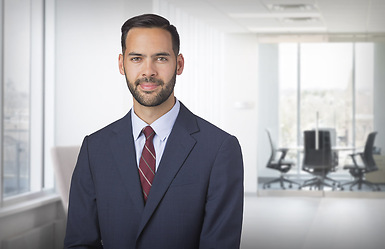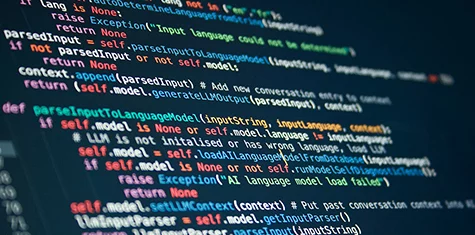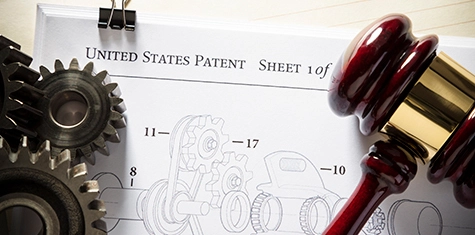A recent decision from the U.S. District Court for the Southern District of New York sheds light on how existing intellectual property laws apply (or do not apply) to AI-generated voice clones.
In Lehrman v. Lovo, Inc., No. 23-cv-08269, 2025 WL 1902547 (S.D.N.Y. July 10, 2025), two professional voice actors sued Lovo, an AI text-to-speech company, for creating and using AI-generated clones of their voices. The plaintiffs alleged that Lovo had solicited original recordings of the voices under false pretenses, promising to use original recordings of their voice for non-commercial, internal research. One of the plaintiffs later discovered that Lovo had created a synthetic version of his voice while listening to an episode of a podcast narrated, in part, by his own digitally replicated voice. Plaintiffs alleged that Lovo had been marketing pseudonymous clones of their voices to paid subscribers, claiming that Lovo’s software “reproduce[s]” actors’ voices in a way that is “practically indistinguishable from the ‘real’ voice” and could “clone to perfection” the voices of specific speakers.
Plaintiffs filed suit against Lovo, asserting the following claims: (1) false association and false advertising claims under the Lanham Act for use of the voice clones; (2) copyright infringement claims under the Copyright Act for use of both the voice recordings and the voice clones; and, (3) claims under New York state laws, including right of publicity and consumer protection laws, along with common law contract, fraud, conversion, unjust enrichment and unfair competition claims. Lovo moved to dismiss all claims.
Trademark Claims: Voice Alone May Not Be a Source Identifier
The plaintiffs brought false association and false advertising claims under Section 43(a) of the Lanham Act, alleging that the use of AI-cloned voices created consumer confusion and improperly suggested endorsement or affiliation. While the court acknowledged that voices are not categorically excluded from trademark protection, it emphasized that trademark law only protects features that function as source identifiers — that is, elements that indicate the origin of goods or services.
The court distinguished this case from classic celebrity endorsement scenarios, where a celebrity’s name, likeness, or persona may serve both as the product and as the brand. In contrast, the plaintiffs were professional voice actors who provided voice services to clients. Because their voices were tools of their trade, rather than branding assets directly associated with a specific commercial source, the court found they lacked the required “secondary meaning” to be protectable under the Lanham Act.
The court also noted that expanding trademark protection to cover any use of a voice that originates from a known individual — without showing that the voice is primarily associated in the marketplace with a particular source — would impermissibly broaden the Lanham Act’s scope and risk turning it into a general right of persona.
The court similarly dismissed the false advertising claim, finding the plaintiffs failed to allege a concrete misrepresentation or a plausible theory of competitive injury.
Copyright Claims: No Protection for Imitated Voices Alone
The plaintiffs also brought claims under the Copyright Act, alleging that Lovo’s use of AI-generated voice clones infringed their rights in the original recordings. The court rejected these claims, holding that copyright protection does not extend to voice per se or to mere imitation of vocal characteristics.
Under 17 U.S.C. § 114(b), copyright protection in a sound recording does not extend to “independent fixation of other sounds” that simulate or mimic the original. In other words, a voice clone that merely mimics the sound of a recording, even if trained using the original, does not constitute a copy under the Copyright Act unless it duplicates actual recorded material.
Here, the plaintiffs alleged that Lovo used the original recordings to train the AI model, which then produced new, synthetic outputs that mimicked their voices. Because the outputs were not direct reproductions, the court found no actionable copying under the Copyright Act. The court also emphasized that even advanced AI-generated mimicry does not change the legal standard; absent substantial similarity to protected expression fixed in the original work, there is no infringement.
However, one copyright claim did survive: the court found that the plaintiffs adequately pleaded infringement based on Lovo’s alleged use of an original recording in its promotional materials beyond the scope of the original license. That claim will proceed.
State Law Claims: A Path Forward?
Though federal claims were largely dismissed, the court allowed several state law claims to continue. Notably, the court declined to dismiss the plaintiffs’ right of publicity claims under New York Civil Rights Law §§ 50 and 51. It held that the recently added “digital replica” provision to New York’s Civil Rights Law could plausibly apply to AI-generated voice clones, even in the absence of visual likeness.
Additionally, the court upheld the plaintiffs’ breach of contract and consumer protection claims under New York law, while dismissing fraud and other common law torts as either inadequately pleaded or preempted.
Takeaway
The Lehrman case highlights the novel questions that lie at the intersection of AI technology, intellectual property and publicity rights. The court’s detailed decision illustrates the current limits of federal IP protections for voice — and underscores the growing importance of state-level publicity rights and unfair competition laws in addressing emerging risks posed by AI voice clones.
As AI-generated content becomes more ubiquitous, companies seeking to leverage technologies to create digital voices should carefully evaluate the legal landscape in their respective states. While federal trademark and copyright protections may not apply to AI voice clones, state rights of publicity and consumer protection laws could pose significant risks. Meanwhile, celebrities, content creators and other individuals with recognizable voices should note that protections for their voice will vary based on what state they live in.
For more on how Fredrikson is tackling issues such as AI voice clones, read our related post Protecting Voice in the Age of AI or check out our Artificial Intelligence page.






